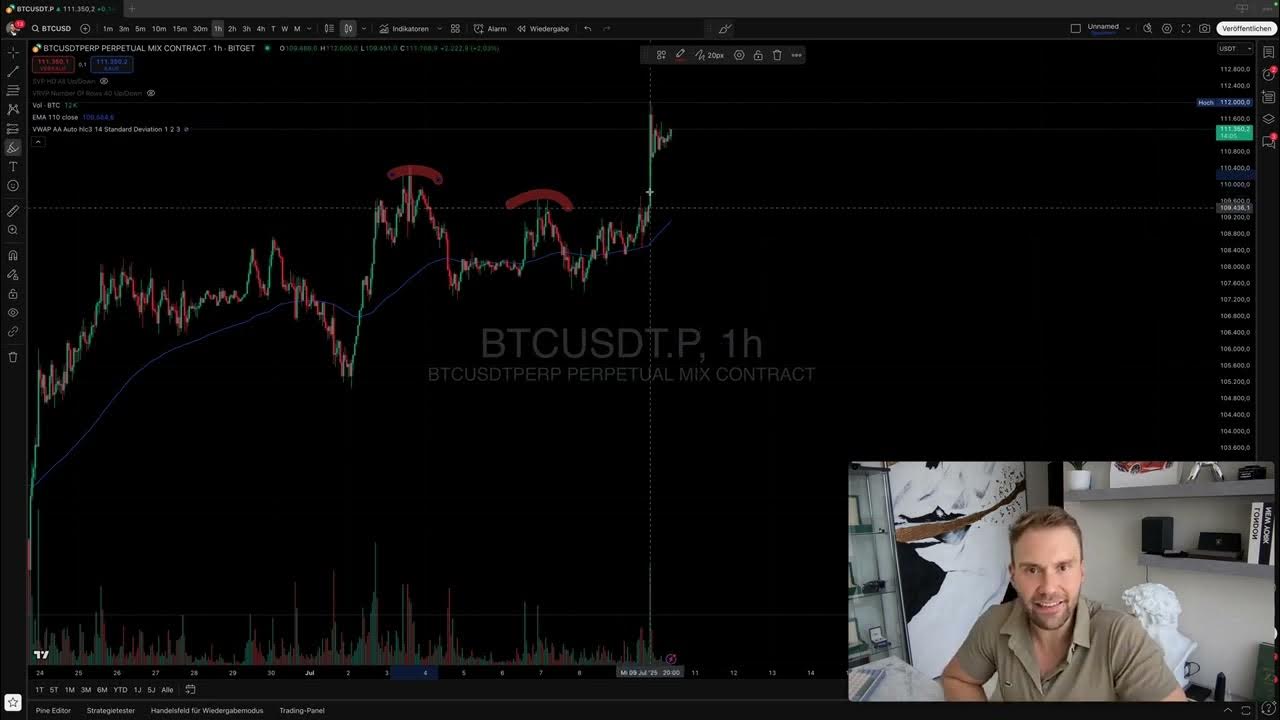New Disruptive Microchip Technology and The Secret Plan of Intel
Summary
TLDRTSMC hat kürzlich eine 1,6 Nanometer-Technologie angekündigt. In diesem Video erklärt der Sprecher, wie die neuen Transistoren funktionieren und warum die Industrie nun beiderseitige Wafer verwenden muss. TSMC, der Hauptlieferant von Chips für 90% der Welt, hat seine Technologie von 3 Mikrometern in den 80er Jahren bis zu 1,6 Nanometern weiterentwickelt. Die neuen Transistoren basieren auf einer Noel-Transistorarchitektur und einer innovativen Stromversorgung von der Rückseite, was die Leistungsaufnahme reduzieren und die Dichte der Transistoren erhöhen soll. Diese Entwicklungen sind von entscheidender Bedeutung für die zukünftige Chip-Produktion und -design.
Takeaways
- 🌟 TSMC hat kürzlich eine 1,6 Nanometer Technologie angekündigt, die die Herstellung von Chips revolutionieren könnte.
- 🔍 Die neuen Transistoren verwenden eine Noel Transistorenarchitektur und eine Rückseitenstromversorgung, was eine beispiellose Innovation darstellt.
- 🏭 Fast 90% der weltweiten Chipproduktion stammt von TSMC, die die technologische Fortschritt und den AI-Boom antreibt.
- 📈 TSMC hat seit 1987 Fortschritte in der Technologie gemacht, von 3 Mikrometern bis hin zu den neuen 1,6 Nanometer Technologie.
- 🛠️ Die neuen Gate-All-Around Transistoren (Nanosheet) bieten bis zu 35% Verbrauchsersparnis im Vergleich zu FinFET Technologie.
- 💡 Die Rückseitenstromversorgung ermöglicht es, die Stromleitungen unterhalb des Substrats zu platzieren, was zusätzlichen Platz für Signalrouten auf der Oberseite freigibt.
- 🔩 Die Trennung von Stromversorgung und Signalübertragung bietet größere Freiheit für die elektronische Designautomatisierung und beeinflusst die Herstellungs- und Entwurfsabläufe.
- 🚀 TSMC plant, die Gate-All-Around Transistoren Anfang 2025 in Massenproduktion zu bringen, mit den ersten Anwendungen in iPhones.
- 🤝 Intel ist ebenfalls aktiv in der Entwicklung neuer Transistorenarchitekturen und Stromversorgungstechnologien und will sogar TSMC in der Produktion überholen.
- 💼 Die Wettbewerbslage zwischen TSMC und Intel wird durch die Fähigkeit bestimmt, die Technologie zuerst mit akzeptablem Ertrag und minimalen Kosten zu produzieren.
Q & A
Was ist die Bedeutung der 1,6-Nanometer-Technologie, die TSMC angekündigt hat?
-Die 1,6-Nanometer-Technologie von TSMC markiert einen bedeutenden Fortschritt in der Halbleiterindustrie, da sie eine weitere Miniaturisierung von Transistoren ermöglicht, was zu leistungsfähigeren und energieeffizienteren Chips führt.
Welche zwei großen Innovationen bringt die neue Transistortechnologie mit sich?
-Die neuen Transistoren basieren auf einer neuen Transistorarchitektur und der Rückseiten-Stromversorgung, was eine Trennung von Stromversorgung und Signalübertragung ermöglicht – ein bedeutender Fortschritt in der Chipentwicklung.
Warum ist die Rückseiten-Stromversorgung so wichtig für die Chipindustrie?
-Die Rückseiten-Stromversorgung verlagert die Stromleitungen auf die Rückseite des Wafers, was Platz für eine dichtere und effizientere Signalübertragung auf der Vorderseite schafft und die Komplexität der Verdrahtung reduziert.
Was ist der Unterschied zwischen FinFET- und Gate-All-Around-Transistoren?
-FinFET-Transistoren haben einen dreiseitigen leitenden Kanal, während Gate-All-Around-Transistoren mehrere leitende Schichten übereinander anordnen, wobei das Gate den Kanal vollständig umschließt, was die Energieeffizienz erhöht.
Was ist das Ziel von Intels 20A-Prozessknoten, und warum ist er riskant?
-Intels 20A-Prozessknoten kombiniert die Einführung von Gate-All-Around-Transistoren mit der Rückseiten-Stromversorgung, was ein hohes Risiko birgt, da zwei bedeutende Innovationen gleichzeitig eingeführt werden.
Wie beeinflusst die Rückseiten-Stromversorgung die EDA-Tools (Electronic Design Automation)?
-Die Rückseiten-Stromversorgung gibt EDA-Tools mehr Freiheit bei der Platzierung und Verdrahtung von Transistoren, was den Designprozess optimiert und neue Möglichkeiten für die Chipentwicklung eröffnet.
Warum hat TSMC beschlossen, vorerst auf die neuen High-NA-EUV-Maschinen zu verzichten?
-TSMC hat sich gegen die High-NA-EUV-Maschinen entschieden, weil diese derzeit nicht wirtschaftlich rentabel sind. Die Lithographieprozesse mit diesen Maschinen dauern länger, was die Produktionskosten erhöht.
Wie könnte Intel die Kosten für die neue EUV-Technologie senken?
-Intel plant, die Kosten durch die Verwendung von direkter Selbstorganisation zu senken, einem komplexen Prozess, bei dem spezielle Polymaterialien auf dem Wafer organisiert werden, um die Herstellung effizienter zu gestalten.
Was ist das CFET-Transistorarchitektur, und warum ist sie wichtig für die Zukunft?
-Die CFET-Architektur stapelt zwei Nanosheet-Transistoren vertikal übereinander, was die Chipfläche weiter reduziert und eine höhere Leistungsdichte ermöglicht. Diese Architektur wird als nächster großer Schritt in der Transistorentwicklung angesehen.
Was bedeutet der Begriff 'Moore's Law' in Bezug auf die Chipentwicklung?
-Das Moore'sche Gesetz besagt, dass sich die Anzahl der Transistoren auf einem integrierten Schaltkreis etwa alle zwei Jahre verdoppelt, was zu einer kontinuierlichen Kostenreduktion und Leistungssteigerung führt.
Outlines

Cette section est réservée aux utilisateurs payants. Améliorez votre compte pour accéder à cette section.
Améliorer maintenantMindmap

Cette section est réservée aux utilisateurs payants. Améliorez votre compte pour accéder à cette section.
Améliorer maintenantKeywords

Cette section est réservée aux utilisateurs payants. Améliorez votre compte pour accéder à cette section.
Améliorer maintenantHighlights

Cette section est réservée aux utilisateurs payants. Améliorez votre compte pour accéder à cette section.
Améliorer maintenantTranscripts

Cette section est réservée aux utilisateurs payants. Améliorez votre compte pour accéder à cette section.
Améliorer maintenantVoir Plus de Vidéos Connexes

TSMC CRUSHED IT! Good Sign For The Other Semiconductor Stocks?

🇹🇭 Steuer-Wende in Thailand!

Apple Intelligence jetzt doch auf Deutsch!

Work begins to create artificial human DNA from scratch | BBC News

Perfekt nach Plan! Neue ATH - und jetzt?

LIVE: Innenministerin Faeser äußert sich zu mehr Grenzkontrollen ab nächster Woche
5.0 / 5 (0 votes)
